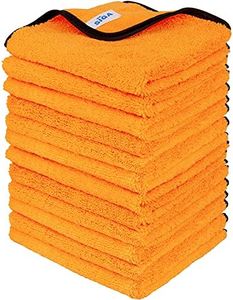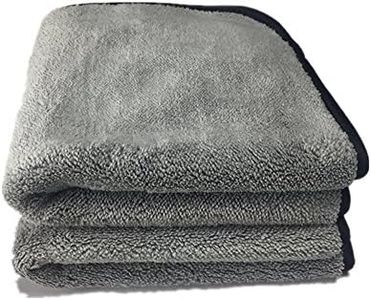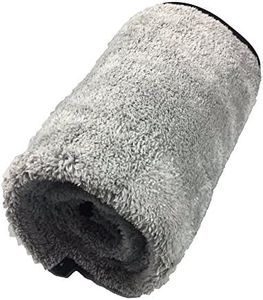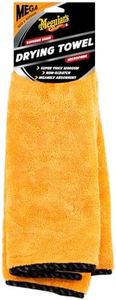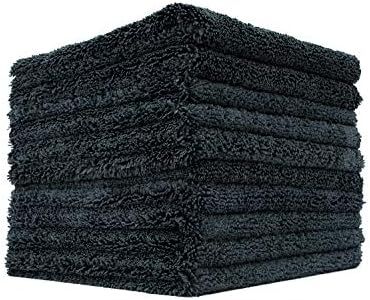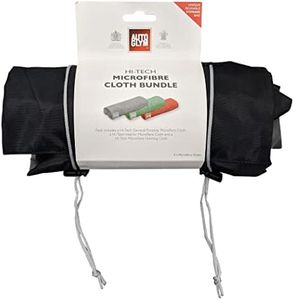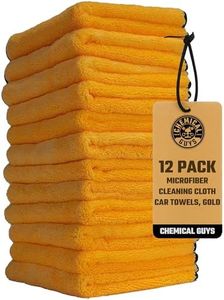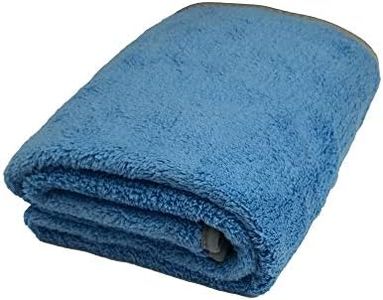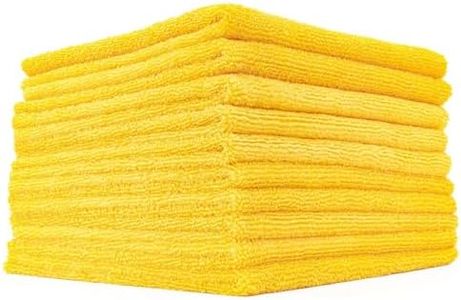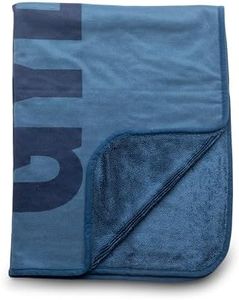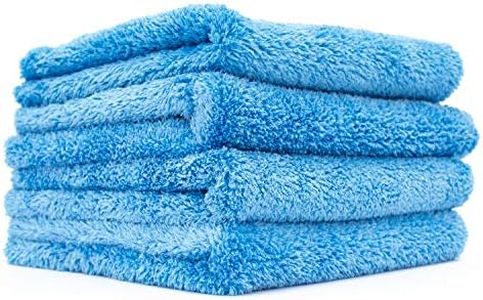We Use CookiesWe use cookies to enhance the security, performance,
functionality and for analytical and promotional activities. By continuing to browse this site you
are agreeing to our privacy policy
10 Best Detailing Towels
From leading brands and best sellers available on the web.Buying Guide for the Best Detailing Towels
Choosing the right detailing towel is essential for anyone who wants to achieve a spotless, scratch-free finish when cleaning and caring for their vehicle. The best towel for you will depend on your needs, such as drying, waxing, buffing, or general cleaning. Knowing the important specifications will help you select a towel that delivers the right performance and ensures that your car’s surfaces stay pristine.MaterialThe material of a detailing towel mainly determines its softness, absorbency, and potential to scratch surfaces. Most high-quality towels are made of microfiber, which is a blend of polyester and polyamide. Microfiber is favored because it’s gentle on paint, highly absorbent, and effective at picking up dirt. Cotton towels are less common now as they are less effective and can be harsher. Always pick a microfiber towel when working on sensitive surfaces - for tougher jobs, a slightly rougher weave might be okay, but for wax removal or final buffing, a plush and soft material is best.
GSM (Grams per Square Meter)GSM tells you how thick and absorbent the towel is, which makes a big difference depending on the job. Lower GSM towels (200-300 GSM) are thinner, less plush, and suitable for general cleaning or interior detailing. Mid-range (300-500 GSM) is more absorbent and good for drying and buffing. High GSM (500-1200+ GSM) towels are extra thick and plush, making them perfect for delicate paintwork and waterless washing. If you frequently deal with sensitive finishes or want the safest experience, lean towards higher GSM towels; for basic tasks, lower GSM is fine.
EdgingThe edges of a towel can sometimes cause scratches if they’re not finished properly. Edges can be stitched, silk-banded, or edgeless (with the fibers themselves forming the edge). Edgeless or silk-banded towels are safest for sensitive surfaces, while basic stitched hems are best for less delicate areas. If scratch risk is a concern—like on glossy paint—choose edgeless or soft-bound edges.
SizeDetaling towels come in a range of sizes, from small (12x12 inches) for tight spaces or interior work, to large (16x24 inches or even bigger) for drying large surfaces quickly. Small towels let you get into nooks and crannies, while larger towels are efficient for drying or bodywork. Your choice should depend on what you plan to clean—small for details, large for broad surfaces.
Pile TypePile type refers to the length and orientation of the fibers. Short-pile towels are better for cleaning glass or removing polish, as they don’t leave lint behind. Long or plush pile is gentler and holds more moisture, which is best for drying or using with quick detailers. If you do a lot of different tasks, consider keeping multiple types: short-pile for glass and polish, long-pile for delicate drying.
Blend RatioMicrofiber towels are usually a blend of polyester and polyamide, commonly shown as ratios like 80/20 or 70/30. The higher the polyamide content, the softer and more absorbent the towel will be. For delicate paint or final buffing, aim for a higher polyamide blend (like 70/30). For general cleaning, an 80/20 blend works well.
